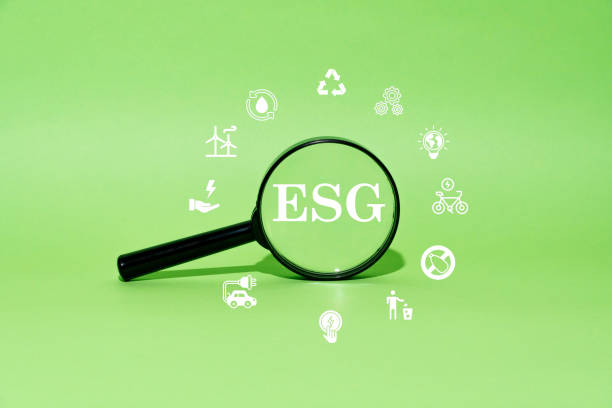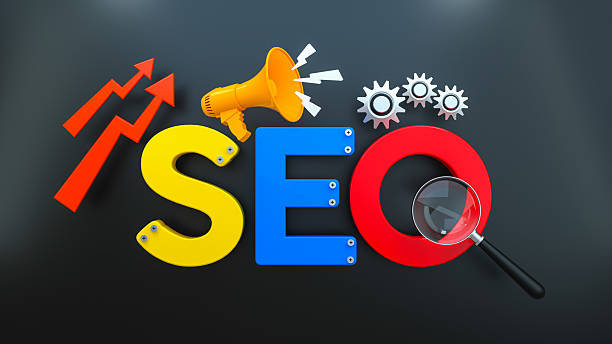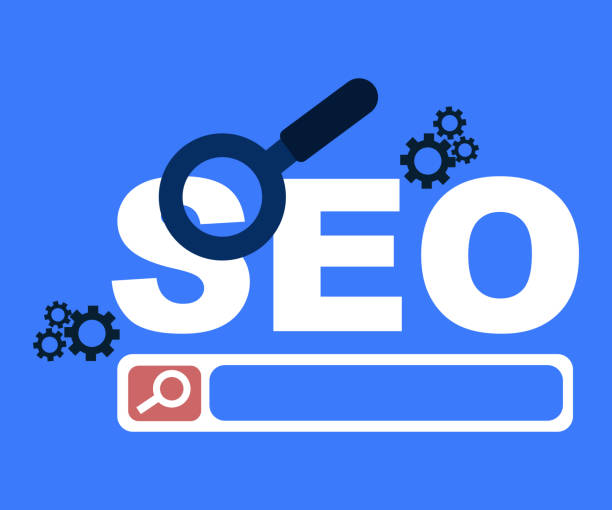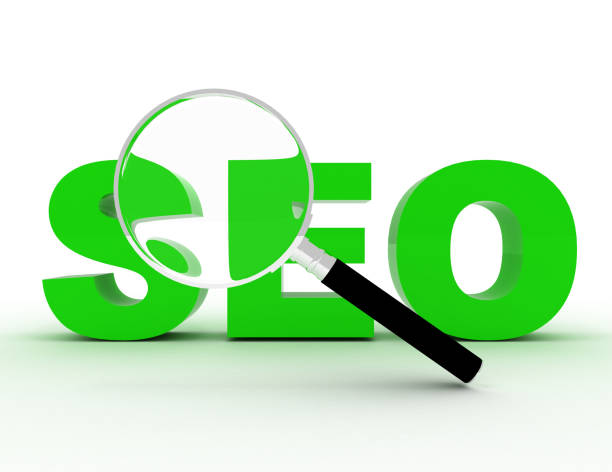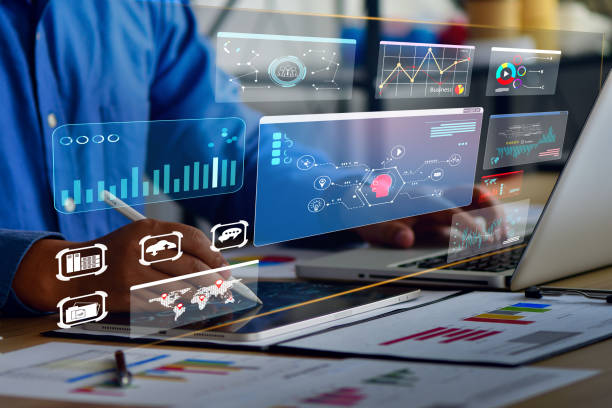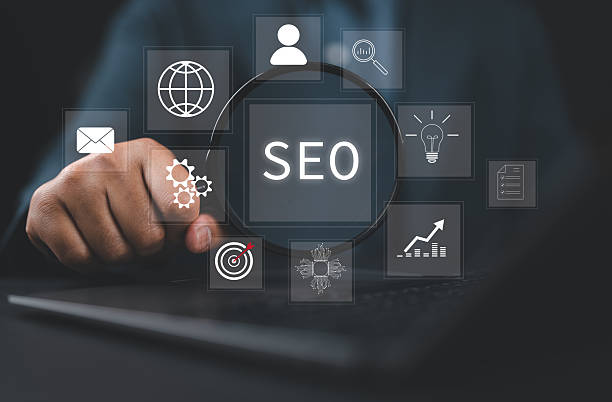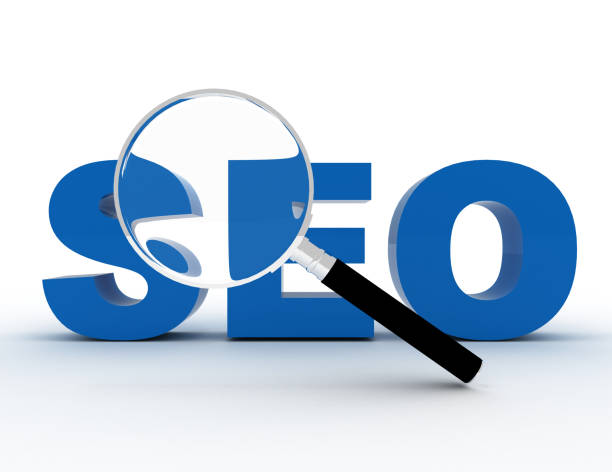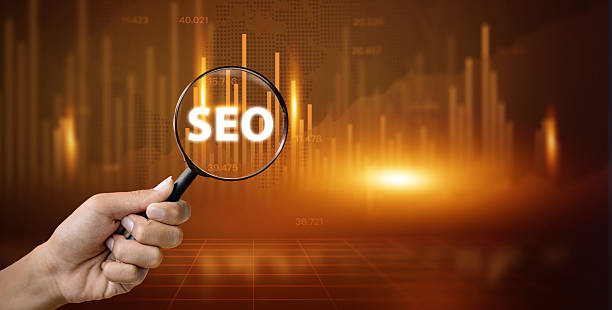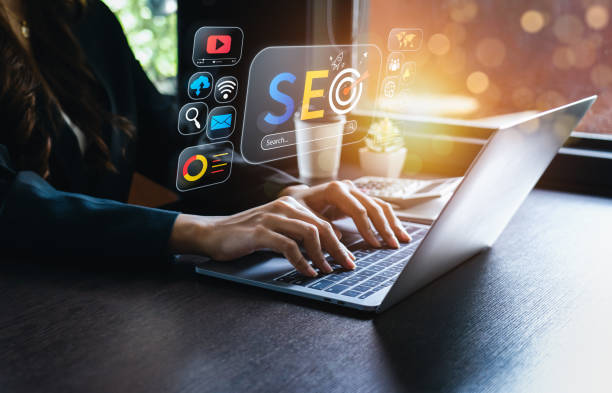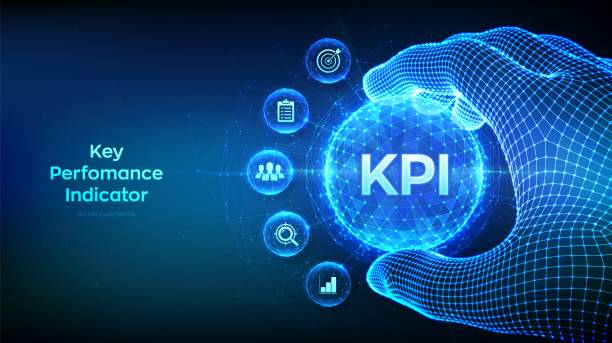What is On-Page SEO and Why Does it Matter?
On-Page SEO refers to a set of actions that we take within our website to improve the site’s ranking in search engines like Google. These actions include optimizing content, site structure, title tags, meta descriptions, and other internal elements of the website. The importance of On-Page SEO stems from the fact that it helps search engines better understand the site’s content and display it to relevant users. In fact, On-Page SEO is the foundation of a successful SEO strategy. Ignoring On-Page SEO can lead to reduced website traffic and lost business opportunities. For more information about SEO, you can visit this link: Moz On-Page SEO
Search engines use complex algorithms to review and rank websites. On-Page SEO helps these algorithms to correctly interpret the site’s content and display it to users in search results. Optimizing titles, meta descriptions, and other internal elements of the site makes search engines understand what your site is about and show it to users who are looking for that topic. In this way, On-Page SEO helps increase site visibility and attract targeted traffic.
On-Page SEO not only helps search engines but also improves user experience. A website with an organized structure, easy navigation, and valuable content can keep users on the site longer and increase the likelihood of converting them into customers. In other words, On-Page SEO not only improves the site’s ranking but also increases user satisfaction and improves overall business performance.
Did you know that your company’s website is the first point of contact for 75% of potential customers?
Your website is the face of your brand. With Rasaweb’s corporate website design services, create an online presence that builds customer trust.
✅ Create a professional and lasting image of your brand
✅ Attract target customers and increase online credibility
⚡ Get a free consultation from Rasaweb experts!
Keyword Research: Finding the Best Phrases to Target
Keyword research is one of the most important steps in On-Page SEO. Before taking any action to optimize the site, you need to know what phrases users are searching for in search engines to find your products or services. The goal of keyword research is to find phrases that attract the most traffic to your site and are aligned with your business goals. There are various tools for keyword research, including Google Keyword Planner, Ahrefs, and SEMrush. To learn more about SEO tools, you can visit this link: Ahrefs Keyword Research Guide
The keyword research process involves various steps. First, you need to create a list of keywords related to your business. Then, using the tools mentioned, check the search volume and competition level of each keyword. Finally, select keywords with high search volume and low competition. These keywords should be used in page titles, meta descriptions, text content, and other internal elements of the site.
In addition to the main keywords, you should also pay attention to long-tail keywords. These keywords usually have lower search volume, but there is also less competition for them, and they can attract very targeted traffic to your site. For example, instead of the keyword “sports shoes,” you can use the phrase “buy men’s sports shoes for running in Tehran.” This phrase is more accurate and increases the likelihood of attracting users who intend to buy. Using keywords in On-Page SEO is very important.
Optimizing Page Title and Meta Descriptions
The Title Tag and Meta Description are two important elements in On-Page SEO that are displayed to users in search results. The title tag is the main title of your page and should include the main keyword of the page. The meta description is a summary of the page’s content and should encourage users to click on your link. For more information about title tags, you can visit this link: Yoast Title Tag Optimization
The title tag should be attractive, concise, and relevant to the page’s content. The length of the title tag should not exceed 60 characters, otherwise, it will be truncated in the search results. The meta description should also be concise, attractive, and contain the main keyword of the page. The length of the meta description should not exceed 160 characters. Using keywords in the title tag and meta description helps search engines better understand the subject of the page and display it to relevant users. In addition, an attractive title and meta description can increase the click-through rate (CTR) and improve site traffic. Improving site traffic is an important principle of On-Page SEO.
Click here to preview your posts with PRO themes ››
On-Page SEO and the proper use of page titles and meta descriptions can improve your site’s ranking.
| SEO Element | Description | Importance |
|---|---|---|
| Page Title | The main title of the page that is displayed in search results. | Very High |
| Meta Description | A summary of the page’s content that is displayed in search results. | High |
| Keywords | Phrases that users search for to find your content. | Very High |
| Heading Tags | Tags that are used to organize and structure content. | Medium |
| Internal Links | Links that connect different pages of your site. | Medium |
Content Optimization: Creating Valuable and Relevant Content
Content is king! This famous phrase in the world of SEO indicates the great importance of content in attracting traffic and improving site ranking. Your content should be valuable, relevant, and unique to attract the attention of users and search engines. For more information about producing quality content, you can visit this link: HubSpot Content Marketing Guide
Valuable content is content that answers users’ questions, solves their problems, and provides them with useful information. Relevant content is content that is aligned with your target keywords and meets the needs of your target audience. Unique content is content that has not been published elsewhere and offers new ideas. To ensure the uniqueness of your content, you can use plagiarism checker tools.
On-Page SEO has a direct relationship with content. The higher the quality of the content, the better your site’s ranking will be. In addition, your content should be updated regularly so that search engines realize that your site is active and dynamic. You can keep your site’s content fresh by publishing new articles, updating old articles, and adding multimedia content such as images and videos. Also, paying attention to the readability of content and using a proper structure (such as heading tags, paragraphs, and lists) can improve user experience and keep users on the site longer.
Are you worried that your company’s old website will drive away new customers? Rasaweb solves this problem with modern and efficient corporate website design.
✅ Increases the credibility of your brand.
✅ Helps attract targeted customers.
⚡ Contact Rasaweb for a free consultation!
Image Optimization: Reducing Size and Using Alt Text
Images play an important role in the attractiveness and better understanding of website content, but improper use of images can slow down the loading speed of the site and damage On-Page SEO. Image optimization includes reducing file size, using a suitable format (such as JPEG or PNG), adding alt text, and properly naming files. For more information about image optimization, you can visit this link: TinyPNG Image Optimization
Reducing the file size of images without loss of quality is one of the most important steps in image optimization. You can use online image compression tools or image editing software such as Photoshop to reduce the file size. Alt Text is text that is displayed to users if the image is not displayed. The alt text should be descriptive and relevant to the content of the image and should also include the main keyword of the page. Proper naming of files also helps search engines better understand the subject of the image. File names should be short, descriptive, and include relevant keywords.
In addition, the use of responsive images is also important. Responsive images automatically adjust to the size of the user’s screen and improve the user experience on different devices (such as mobile phones and tablets). By optimizing images, you can increase the loading speed of the site, improve the site’s ranking in search engines, and enhance the user experience. Image optimization plays an important role in On-Page SEO.
URL Structure Optimization: Creating Short and Descriptive URLs
The URL structure of your website plays an important role in On-Page SEO and user experience. Short, descriptive, and relevant URLs help search engines and users better understand the subject of the page. Long and complex URLs are not only confusing for users but can also reduce the site’s ranking in search engines. For more information about optimizing the URL structure, you can visit this link: Moz URL Structure
The best way to create optimized URLs is to use the main keywords of the page and remove unnecessary words. For example, instead of the long and complex URL “example.com/blog/category/2023/05/15/article-title-with-many-unnecessary-words”, you can use the short and descriptive URL “example.com/blog/article-title”. Also, it is recommended to use a hyphen (-) instead of an underscore (_) to separate words in the URL.
Click here to preview your posts with PRO themes ››
In addition, the use of a hierarchical structure for URLs is also important. The hierarchical structure helps search engines better understand the overall structure of the site and determine the importance of different pages. For example, you can use the structure “example.com/category/subcategory/page” to organize the URLs of your site. Optimizing the URL structure is an important principle in On-Page SEO.
Internal Linking: Creating a Strong Network of Links
Internal linking refers to the process of creating links between different pages of your website. Internal links help search engines better understand the site structure and determine the importance of different pages. Also, internal links can direct users to other related pages and improve the user experience. For more information about internal linking, you can visit this link: SEMrush Internal Linking Guide
Internal linking should be done strategically. Links should be relevant to the content of the page and point to other important pages of the site. Avoid using too many links and try to place the links naturally in the text. The anchor text should also be relevant to the content of the destination page and include the main keyword of the page.
| Feature | Description | Importance |
|---|---|---|
| Relevance | Links should be relevant to the content of the source and destination pages. | Very High |
| Number | Avoid using too many links. | Medium |
| Anchor Text | The anchor text should be relevant to the content of the destination page. | High |
| Variety | Don’t avoid linking to different pages on your site. | Medium |
| Position | Place the links naturally in the text. | High |
Internal linking greatly helps On-Page SEO and causes users to stay on your site for a longer period. In addition, you can use link analysis tools to identify internal linking opportunities. These tools help you identify pages that need more links and add appropriate internal links to them.
Optimizing Site Speed: Increasing Page Loading Speed
Site speed is one of the important factors in On-Page SEO and user experience. Users who experience slow site loading speeds are likely to leave the site and visit other sites. Search engines also care about site loading speed, and sites that have faster loading speeds rank better in search results. For more information about optimizing site speed, you can visit this link: Google PageSpeed Insights
There are various ways to increase site loading speed, including optimizing images, compressing CSS and JavaScript files, using a CDN (Content Delivery Network), and enabling caching. Image optimization includes reducing file size, using a suitable format, and compressing images. Compressing CSS and JavaScript files can reduce file size and increase site loading speed. Using a CDN helps you store your site’s content on different servers around the world and choose the closest server for users to load content. Enabling caching causes users’ browsers to store your site’s content and load the content from the cache on subsequent visits.
By optimizing site speed, you can improve user experience, reduce bounce rate, and improve the site’s ranking in search engines. On-Page SEO and optimizing site speed are very important factors in improving your site’s ranking.
Are you losing business opportunities because of an old website? With Rasaweb, solve the problem of not attracting potential customers through the website forever!
✅ Attract more high-quality leads
✅ Increase brand credibility in the eyes of customers
⚡ Get a free corporate website design consultation
Mobile Optimization: Creating a Great User Experience on Mobile Devices
With the increasing use of mobile devices to browse the internet, optimizing the site for mobile has become particularly important. Search engines prioritize sites that are optimized for mobile and display them higher in search results. A mobile-friendly site should automatically adjust to the user’s mobile device screen size, have easy navigation, and readable content. For more information about mobile optimization, you can visit this link: Google Mobile-First Indexing
There are various ways to optimize the site for mobile, including using responsive design, using AMP (Accelerated Mobile Pages), and creating a separate mobile version. Responsive design allows you to have a website that automatically adjusts to the size of the user’s device screen. AMP is an open-source framework that helps you create fast and lightweight web pages for mobile. Creating a separate mobile version allows you to create a separate version of your website for mobile users.
By optimizing the site for mobile, you can improve user experience, increase conversion rate, and improve the site’s ranking in search engines. On-Page SEO is directly related to mobile optimization and special attention should be paid to it.
Click here to preview your posts with PRO themes ››
Measuring and Analyzing On-Page SEO Results
After taking On-Page SEO measures, it is important to measure and analyze the results to understand which actions have been effective and which actions need improvement. There are various tools for measuring and analyzing SEO results, including Google Analytics, Google Search Console, and SEMrush. For more information about Google Analytics, you can visit this link: Google Analytics
Using Google Analytics, you can measure site traffic, bounce rate, time on site, and other important metrics. Using Google Search Console, you can review your site’s performance in search results, identify the keywords that attract traffic to your site, and fix site errors. Using SEMrush, you can check your site’s ranking for different keywords, analyze competitors, and identify new SEO opportunities.
By analyzing SEO results, you can improve your SEO strategy and achieve better results. Measuring and analyzing results is an important part of On-Page SEO and should be done regularly.
Frequently Asked Questions
| Question | Answer |
|---|---|
| What is On-Page SEO? | On-Page SEO refers to the set of actions that are performed within a website and on the content of pages to achieve a better ranking in search results. |
| Why is On-Page SEO important for a website? | On-Page SEO helps search engines better understand the content of your page and assess its importance. It also provides a better user experience for visitors. |
| What are the most important factors of On-Page SEO? | Among the most important factors are keyword optimization, content quality, title tag, meta description, URL structure, heading tags (H1-H6), internal linking, and image optimization. |
| What role does the Title Tag play in On-Page SEO? | The title tag is one of the most important factors of On-Page SEO, which displays the title of your page in search results and browser tabs. It should include the main keyword and be attractive. |
| What is the importance of the Meta Description in On-Page SEO? | The meta description provides a summary of the page’s content, and although it does not directly affect ranking, it can increase the click-through rate (CTR) by encouraging users to click. |
| How is a keyword used in On-Page SEO? | Keywords are phrases that users use to search for information in search engines. Proper and natural use of them in the content helps the search engine to recognize the subject of the page. |
| What is internal linking and what is its benefit in On-Page SEO? | Internal linking means creating links between different pages of a website. This helps distribute the credit of pages, helps search engine robots crawl, and improves the user experience. |
| How does image optimization affect On-Page SEO? | Image optimization includes compressing the size, using appropriate Alt tags, and properly naming files. This improves page loading speed and helps search engines understand the content of the image. |
| What does quality content mean in On-Page SEO? | Quality content means content that is comprehensive, accurate, unique, up-to-date, and user-friendly and meets the needs of users. |
| What role does the URL structure play in On-Page SEO? | Readable, short URLs that include the main keyword help search engines and users better understand the content of the page and improve the user experience. |
And other services of Rasa Web advertising agency in the field of advertising
Smart Reporting: A new service to increase sales through dedicated programming.
Smart Social Media: A combination of creativity and technology to increase click-through rates by precisely targeting the audience.
Smart Marketing Automation: Professional optimization to increase sales using dedicated programming.
Smart Direct Marketing: An effective tool for managing campaigns with an attractive user interface design.
Smart Reporting: A creative platform for improving campaign management with dedicated programming.
And more than a hundred other services in the field of internet advertising, advertising consulting, and organizational solutions
Internet Advertising | Advertising Strategy | Ad Reportage
Resources
What is On-Page SEO?
,On-Page SEO tips to improve the site
,What is On-Page SEO?
,What is On-Page SEO and how to do it?
? Are you ready to transform your business in the digital world? Rasaweb Digital Marketing Agency, with expertise in areas such as responsive website design, professional SEO, and targeted advertising campaigns, provides innovative solutions for your sustainable growth. With us, have a powerful and memorable presence on the web.
📍 Tehran, Mirdamad Street, next to the Central Bank, South Kazerun Alley, Ramin Alley No. 6
“`


